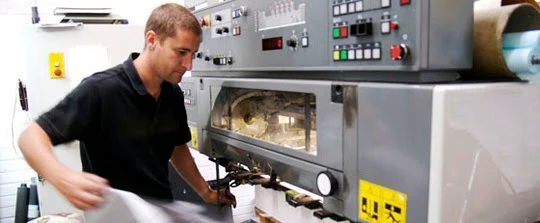Out of ideas for quick expansion of your print business? Here’s one you probably missed…

We all know that it’s getting harder and harder to grow a print business the old way. Digitization means many customers are satisfied with pdfs rather than printed versions of brochures and other basic printed material. And the Internet has brought a wide range of low cost competitors from around the world who are stealing the low end of key segments of the business. Profit margins are getting smaller, and too many of us are working just to pay the rent.
We need to look for new sources of growth, but it’s hard to know how to get started. New technologies seem promising, but high costs and steep learning curves often hold us back.
Many printers think 3D printing in particular is beyond them. But with the slowdown in traditional print, 3D’s growth of 25+% per year is impossible to ignore.
The good news is you already have most of what you need to succeed in adding some 3D magic to your 2D print business. As with traditional printing, it’s all about understanding your customer’s needs and delivering quality based on careful attention to each stage of the process. The rest are details that only require good management for success.
Here are 3 simple things you can do now to start benefiting from 3D growth:
1) TALK TO YOUR CUSTOMERS:
Chances are, your best, most innovative customers are already thinking about or even using 3D for some of their projects, but haven’t considered you because they think of you as a traditional printer. Give them a call and find out what they’re up to in this area. Remember, this is research, not a sales call. A good customer will appreciate your interest in their projects, and will be happy to share their thoughts and experience. Your goal should be to find out what they value in 3D printing and why. After speaking to just a few customers, you should begin to see some similarities in what they are looking for. This will give focus to your expansion plans.
2) START SMALL:
The best way to begin offering 3D is for smaller projects like prototypes or models. A small, desktop 3D printer is relatively inexpensive and easy to learn. A good starting point is a fused deposition modeling (FDM) printer, which extrudes molten material that hardens in layers according to a design, typically conveyed in computer-aided design (CAD) format. This works something like an automated, computer-controlled hot glue gun. The price range for a good 3D desktop printer of this type is typically $1,000-$2,500. We advise caution when considering cheaper models: particularly when you’re just starting out, you will want a reliable brand with good local distributor support. This will give you greater confidence as you begin your first explorations into the brave new world of 3D–and will probably save you money in the long run.
3) ENSURE QUALITY:
This is the most important step: your customer will judge you on the quality of execution more than anything else. Make sure you leave time to perfect your final product. This includes hand finishing–either by you or your sub-contractor–as well as alignment between both 2D and 3D aspects of the project.
We all know that it’s getting harder and harder to grow a print business the old way. Digitization means many customers are satisfied with pdfs rather than printed versions of brochures and other basic printed material. And the Internet has brought a wide range of low cost competitors from around the world who are stealing the low end of key segments of the business. Profit margins are getting smaller, and too many of us are working just to pay the rent.
We need to look for new sources of growth, but it’s hard to know how to get started. New technologies seem promising, but high costs and steep learning curves often hold us back.
We hope this helps explain some of the science behind common color problems, and how to address them more effectively.
Many printers think 3D printing in particular is beyond them. But with the slowdown in traditional print, 3D’s growth of 25+% per year is impossible to ignore.
The good news is you already have most of what you need to succeed in adding some 3D magic to your 2D print business. As with traditional printing, it’s all about understanding your customer’s needs and delivering quality based on careful attention to each stage of the process. The rest are details that only require good management for success.
https://www.swathly.com/out-of-ideas-for-quick-expansion-of-your-print-business-heres-one-you-probably-missed/
Interested in more ideas and help getting started? Please contact us